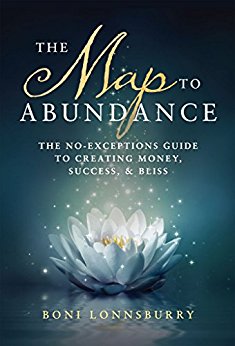In the cash-rich 1920s, the ambition of those wanting wealth was to be “a tiger man;” when translated meant to manfully seek out wealth with all the bravery of an “adventurer,” and upon getting it, stand arms akimbo on a “mountain.” In the equally cash-rich 1980s, a proselytizing note was added to such macho aggressiveness contained in the phrase “greed is good;” not only for those who garnered wealth, but for the rest of society as well. The theory ran that the more what is today called the “one percent” earned, the more these riches “trickled down” to the rest of society.
In contrast to this was the “me decade” Zen fads of the 1970s, in which those who discoed at night spent the day in seminars designed to help them find their “inner peace” (the phrase bandied about in that era was “It’s ok to be me”). An achievement of Lonnsburry’s part memoir/ part instructional manual is how she combines spiritualism designed as “motivational lectures” with the goal of tapping into and then using the forces that govern the universe, with the hard-headed practicality of economics.
The book is not for everyone, however. This is especially true for those who cannot approach it with an open mind, or circumstances similar to Lonnsburry (bankrupt with all assets seized). But for those who actually believe in the “rags to riches,” or “pulling one up by one’s bootstraps” ethos, a notion that still has some power even in the 21st century, the book will be invaluable. It must be said that one has to have patience when putting Lonnsburry’s strategies into play.
Paramount to her lesson is that “students” have to become aware of how the universe works, and how to find abundance in it. Stripped of some of her terms, the philosophy she advocates is the same often given to recovering alcoholics: that one cannot dull one’s senses and succeed. All in all, Lonnsbury has written an effective book that readers should open their minds to.
~Ron Capshaw for IndieReader

